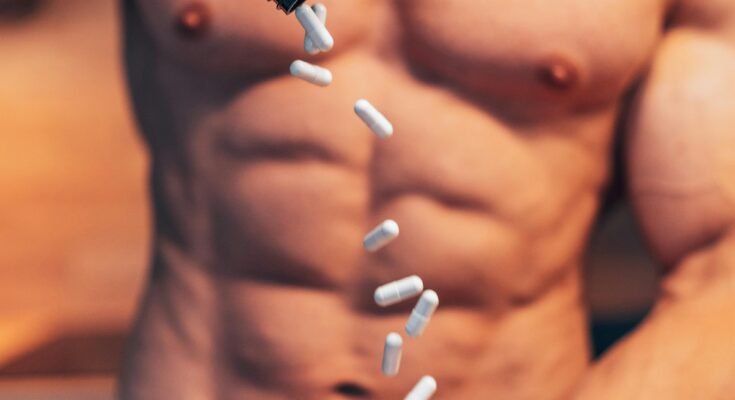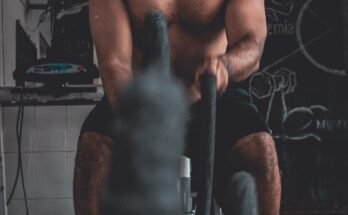To achieve your health and fitness goals, it’s important to combine exercise and dieting in a balanced manner. Working on each individually might help in a limited capacity, but the combination and interaction between proper nutrition and consistent physical activity can do wonders to your results. Whether you want to lose weight, build muscle, or remain in good health, understanding the harmonious interplay between exercise and diet is the key. This guide provides tips on how to achieve success that can be maintained in the long term.
1. Understand the Science of Energy Balance
The simple rule of thumb is, the energy you consume versus the energy you expend determines whether you gain weight, lose weight, or maintain weight.
- Calories In vs. Calories Out: To lose weight, you need a calorie deficit (burning more than you consume). To gain muscle, a slight calorie surplus plus strength training is needed.
- Why It Matters: A mere focus on one or the other runs the risk of muscle loss on the side of dieting, while exercising without making dietary changes will definitely stall weight loss.
- Tip: You can use calorie tracker apps to monitor your intake and achieve your targets throughout the day.
2. Time Your Nutrients Properly
The timing of your meals and snacks can be beneficial for performance and recovery.
- Pre-Workout Nutrition: Have a small meal consisting of carbs and protein 1-2 hours before exercising.
Examples might include a banana with peanut butter or oatmeal with berries. - Post-Workout Recovery: Within 30-60 minutes after your workout, make sure to have a drink packed with carbs and protein.
Examples include a protein smoothie or grilled chicken served with quinoa and vegetables. - Why It Works: Proper nutrient timing helps with energy replenishment, repairing of muscles, and fat loss.
3. Choose the Right Type of Exercise:
Different exercises yield different results; it matters when goals dictate one’s choice of activities.
- Cardio for Fat Loss: Running, cycling, or swimming burn plenty of calories while boosting heart health.
- Strength Training for Muscle Gain: Bodyweight or weightlifting routines facilitate muscle growth while enhancing metabolism.
- Flexibility and Balance: Doing yoga or pilates increases your usability and reduces the likelihood of injury.
Tip: Mix cardio with strength training for the benefits of both.
4. Customize Your Diet for Your Goals:
Your diet must complement the exercise plan and work for your specific goals.
- For Weight Loss:Be in a calorie deficit while upping your protein intake to preserve muscle.
Fiber-rich foods will keep you full longer: vegetables, whole grains, and legumes. - For Muscle Gain:Eat in a slight surplus combined with enough protein intake to promote muscle growth (around 1.6–2.2 grams of protein per kilogram of your own body weight).
Add in healthy fats and complex carbs to fuel your workouts.
5. Hydrating Is Important
Good hydration contributes significantly to performance and general health.
- During Exercise: Hydrate enough during workouts. Prolonged efforts might require drinks with electrolytes.
- Aim for: 8-10 cups of water on average daily, more or less depending on your activity level and environment.
- Why: Performance is greatly reduced if dehydrated with inefficient recovery and fatigue.
6. Track Your Progress
Tracking your journey will help you know what works and what changes need to be made.
Measure Critical Metrics:
- Weight, body fat percentage, and muscle mass.
Increments in strength and endurance. - Change as Necessary: In case of a plateau, reassess the caloric intake, the regimen, or both.
- Pro: Record your progress in detail using fitness apps or journals.
7. Common Pitfalls to Avoid
To bring together exercise and diet to get the best results, one needs to avoid the common pitfalls:
- Over-training Without Energy: If you tend to do exercises beyond a certain limit but aren’t giving your body enough food, you will not reap the benefits of this training. It may result in burnout or injuries.
- Crash Diets: Severe restrictions on calories will slow down metabolism and, in reality, kick-start the process of muscle loss.
- Skipping Meals: Missing meals means dips in energy and weaker performance.
- Solution: There should be a balance in both exercise and diet.
Build a Solid Support System
You can really cut a swath through reaching your goals with a very supportive environment.
- Professional Guidance: A plan supervised by a trainer-and-or dietician will write you a set, personalized regimen.
- Bring Along Family or Friends: A responsible friend will motivate your workout routines.
- Use Technology: Technology brought to us in the form of apps and online communities provides resources and accountability.
8. A Sample Day
This is an example day for diet and exercise.
- Morning: 30 minutes of moderate-intensity cardio (jogging or cycling).
- Breakfast: Greek yogurt and granola topped with fresh fruits.
- Mid-Morning Snack:Some almonds and an apple.
- Lunch:Mixed salad with grilled chicken, heads of greens, avocado, and olive oil dressing.
- Afternoon Snack:Protein shake or hard-boiled eggs with carrot sticks.
- Evening:Strength training; session focusing upon the major muscle groups.
- Dinner: Salmon with quinoa and steamed broccoli.
- Post-Workout Snack:Cottage cheese drizzled with honey.
Conclusion
Combining exercise and diet for maximum results is possible; however, it requires a careful approach following the diet based on individual goals that could be sustainable over the long term. In short, it involves maintaining energy balance, timing the intake of nutrients, and regular physical activity to maximize health.



